Related Research Articles
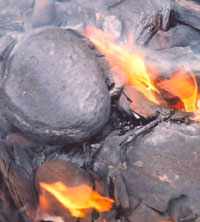
Oil shale is an organic-rich fine-grained sedimentary rock containing kerogen from which liquid hydrocarbons can be produced. In addition to kerogen,general composition of oil shales constitutes inorganic substance and bitumens. Based on their deposition environment,oil shales are classified as marine,lacustrine and terrestrial oil shales. Oil shales differ from oil-bearing shales,shale deposits that contain petroleum that is sometimes produced from drilled wells. Examples of oil-bearing shales are the Bakken Formation,Pierre Shale,Niobrara Formation,and Eagle Ford Formation. Accordingly,shale oil produced from oil shale should not be confused with tight oil,which is also frequently called shale oil.

Harrison County is a county located in the U.S. state of Ohio. As of the 2020 census,the population was 14,483,making it the fifth-least populous county in Ohio. Its county seat and largest village is Cadiz. The county is named for General William Henry Harrison,who was later President of the United States.

Fracking in the United States began in 1949. According to the Department of Energy (DOE),by 2013 at least two million oil and gas wells in the US had been hydraulically fractured,and that of new wells being drilled,up to 95% are hydraulically fractured. The output from these wells makes up 43% of the oil production and 67% of the natural gas production in the United States. Environmental safety and health concerns about hydraulic fracturing emerged in the 1980s,and are still being debated at the state and federal levels.

Shale oil extraction is an industrial process for unconventional oil production. This process converts kerogen in oil shale into shale oil by pyrolysis,hydrogenation,or thermal dissolution. The resultant shale oil is used as fuel oil or upgraded to meet refinery feedstock specifications by adding hydrogen and removing sulfur and nitrogen impurities.
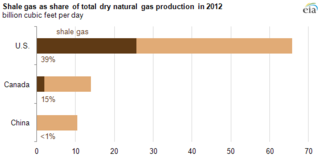
Shale gas is an unconventional natural gas that is found trapped within shale formations. Since the 1990s,a combination of horizontal drilling and hydraulic fracturing has made large volumes of shale gas more economical to produce,and some analysts expect that shale gas will greatly expand worldwide energy supply.
Oil shale gas is a synthetic non-condensable gas mixture (syngas) produced by oil shale thermal processing (pyrolysis). Although often referred to as shale gas,it differs from the natural gas produced from shale,which is also known as shale gas.
The TOSCO II process is an above ground retorting technology for shale oil extraction,which uses fine particles of oil shale that are heated in a rotating kiln. The particularity of this process is that it use hot ceramic balls for the heat transfer between the retort and a heater. The process was tested in a 40 tonnes per hour test facility near Parachute,Colorado.
The Paraho process is an above ground retorting technology for shale oil extraction. The name "Paraho" is delivered from the words "para homem",which means in Portuguese "for mankind".
The Superior multimineral process is an above ground shale oil extraction technology designed for production of shale oil,a type of synthetic crude oil. The process heats oil shale in a sealed horizontal segmented vessel (retort) causing its decomposition into shale oil,oil shale gas and spent residue. The particularities of this process is a recovery of saline minerals from the oil shale,and a doughnut-shape of the retort. The process is suitable for processing of mineral-rich oil shales,such as in the Piceance Basin. It has a relatively high reliability and high oil yield. The technology was developed by the American oil company Superior Oil.
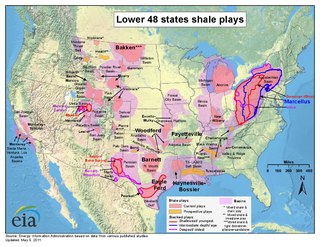
Shale gas in the United States is an available source of unconventional natural gas. Led by new applications of hydraulic fracturing technology and horizontal drilling,development of new sources of shale gas has offset declines in production from conventional gas reservoirs,and has led to major increases in reserves of U.S. natural gas. Largely due to shale gas discoveries,estimated reserves of natural gas in the United States in 2008 were 35% higher than in 2006.
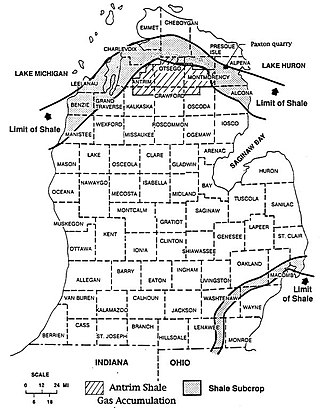
The Antrim Shale is a formation of Upper Devonian age in the Michigan Basin,in the US state of Michigan,and extending into Ohio,Indiana and Wisconsin. It is a major source of natural gas in the northern part of the basin.

The petroleum industry in Ohio dates from 1859. Ohio continues to produce significant quantities of oil and gas,having produced more than 1 billion barrels of oil and 9 trillion cubic feet of natural gas since 1860. Unconventional resources,primarily in eastern Ohio,are likely to increase production in Ohio.

The New Albany Shale is an organic-rich geologic formation of Devonian and Mississippian age in the Illinois Basin of the United States. It is a major source of hydrocarbons.
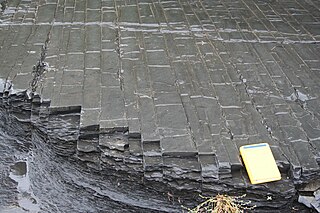
The Utica Shale is a stratigraphical unit of Upper Ordovician age in the Appalachian Basin. It underlies much of the northeastern United States and adjacent parts of Canada.

Berea Sandstone,also known as Berea Grit,is a sandstone formation in the U.S. states of Michigan,Ohio,Pennsylvania,West Virginia,and Kentucky. It is named after Berea,Ohio. The sandstone has been used as a building stone and is a source of oil and gas.

The energy sector of Ohio consists of thousands of companies and cities representing the oil,natural gas,coal,solar,wind energy,fuel cell,biofuel,geothermal,hydroelectric,and other related industries. Oil and natural gas accounts for $3.1 billion annually in sales while ethanol generates $750 million. Toledo is a national hub in solar cell manufacturing,and the state has significant production of fuel cells. In 2008,the state led the country in alternative energy manufacturing according to Site Selection Magazine,while the natural gas industry has experienced growth due to the expansion of shale gas.

Tight oil is light crude oil contained in unconventional petroleum-bearing formations of low permeability,often shale or tight sandstone. Economic production from tight oil formations requires the same hydraulic fracturing and often uses the same horizontal well technology used in the production of shale gas. While sometimes called "shale oil",tight oil should not be confused with oil shale or shale oil. Therefore,the International Energy Agency recommends using the term "light tight oil" for oil produced from shales or other very low permeability formations,while the World Energy Resources 2013 report by the World Energy Council uses the terms "tight oil" and "shale-hosted oil".

Hydraulic fracturing is a well stimulation technique involving the fracturing of formations in bedrock by a pressurized liquid. The process involves the high-pressure injection of "fracking fluid" into a wellbore to create cracks in the deep rock formations through which natural gas,petroleum,and brine will flow more freely. When the hydraulic pressure is removed from the well,small grains of hydraulic fracturing proppants hold the fractures open.

The Marcellus natural gas trend is a large geographic area of prolific shale gas extraction from the Marcellus Shale or Marcellus Formation,of Devonian age,in the eastern United States. The shale play encompasses 104,000 square miles and stretches across Pennsylvania and West Virginia,and into eastern Ohio and western New York. In 2012,it was the largest source of natural gas in the United States,and production was still growing rapidly in 2013. The natural gas is trapped in low-permeability shale,and requires the well completion method of hydraulic fracturing to allow the gas to flow to the well bore. The surge in drilling activity in the Marcellus Shale since 2008 has generated both economic benefits and considerable controversy.
The Mansfield Natural Gas Field is located west of Mansfield,Ohio,within the Appalachian foreland basin. The field is 1.5 miles (2.4 km) long by 1.4 miles (2.3 km) wide and is in a general oval shape,stretching northward. This field,although small,is an analog for many of the natural gas fields that occur within the Appalachian Basin. It was first discovered by the Pan American Petroleum and Transport Company in the early 1930s. It is part of the Utica –Lower Paleozoic system,which is estimated to make up 15 to 20 percent of the total hydrocarbon abundance of the Appalachian Basin.
References
- ↑ "Board of Trustees". Ohio Oil and Gas Association. 29 Aug 2018.
- ↑ Warnock, Matt (27 Jan 2017). "ShaleOhio: Aslanides to serve as president of Ohio Oil and Gas Association". ShaleOhio.